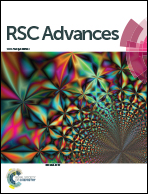Hydrothermal preparation of nest-like CuO nanostructures for non-enzymatic amperometric detection of hydrogen peroxide
Abstract
In this study, nest-like CuO nanostructures were hydrothermally synthesized at 160 °C for 6 h with 0.24 g Cu(NO3)2·2.5H2O in 20 mL H2O and 12 mL NH3·H2O without using any surfactant. The influences of the initial amount of Cu(NO3)2·2.5H2O and hydrothermal reaction time on CuO morphologies were investigated. In addition to the morphology study by scanning electron microscopy (SEM) and the crystal structure study by X-ray diffraction (XRD), as-synthesized samples were also characterized systematically by electrochemical methods including cyclic voltammetry (CV), amperometric detection (i–t) and electrochemical impedance spectroscopy (EIS). It was found that the as-prepared nest-like CuO modified glassy carbon electrode exhibited good electrochemical performance towards the reduction of H2O2. Low detection limit (0.44 μM), fast response (<2 s), and relatively high sensitivity (14.06 μA mM−1) were achieved, which was mainly due to the porous structure of the nest-like nanostructure that can provide a large specific surface area and efficient electron charge transfer and mass transport properties, thus making it a promising candidate for the efficient, stable, and precise non-enzymatic amperometric detection of H2O2.


 Please wait while we load your content...
Please wait while we load your content...